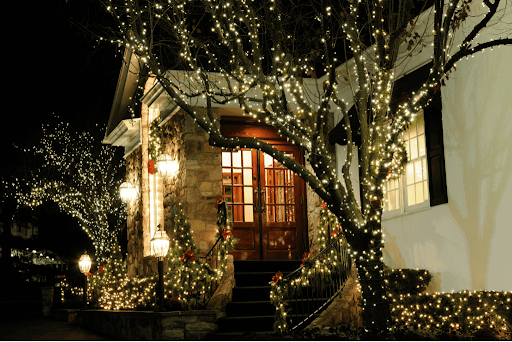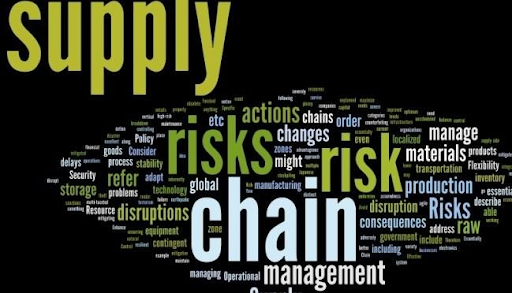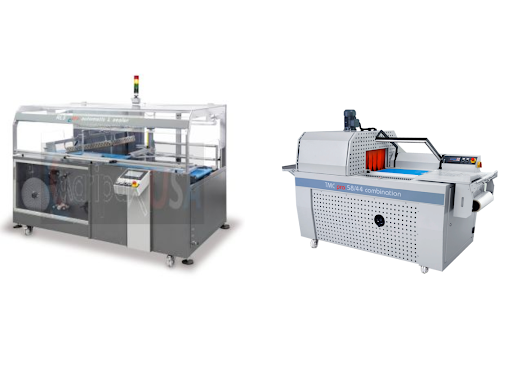Introduction
Schedule 40 pipes are a staple in the plumbing, construction, and electrical industries. Whether you’re a wholesaler, a construction company, an electric fitting company, or a plumbing professional, you’re likely familiar with these pipes. However, despite their widespread use, several misunderstandings about Schedule 40 pipes persist. These misconceptions can lead to improper applications, unnecessary expenses, and missed opportunities for efficiency.
This article will address the eight most common misunderstandings about Schedule 40 pipes, explaining the facts behind each one. By the end, you’ll have a clearer understanding of how to properly use Schedule 40 pipes in various projects, ensuring optimal performance and cost-effectiveness.
1. Misunderstanding: Schedule 40 Pipes Are Only for Residential Use
Explanation:
A common misconception about Schedule 40 pipes is that they are only suitable for residential applications due to their perceived lightweight structure and low pressure rating. This myth often leads professionals to choose other pipes for commercial or industrial use, even when Schedule 40 would be a viable option.
Reality:
While it’s true that Schedule 40 pipes are commonly used in residential plumbing, they are also suitable for commercial and industrial applications. Schedule 40 pipes are designed to handle moderate pressures, making them a versatile choice for a range of projects, including:
- Irrigation Systems: Schedule 40 pipes are widely used in agricultural and landscaping projects to carry water efficiently.
- Wastewater and Drainage: In both commercial and residential plumbing, Schedule 40 pipes serve as an effective solution for drainage systems.
- Moderate-Pressure Industrial Systems: For systems that don’t require the durability of Schedule 80 pipes, Schedule 40 pipes are a cost-effective option for industrial use.
Why the Misunderstanding Exists:
Many people confuse Schedule 40 pipes with Schedule 80 pipes, which are designed to handle higher pressure. Schedule 40 pipes are thinner and lighter, which often leads people to assume they’re less durable, even though they are more than capable of handling a wide variety of projects.
Key Takeaway:
Schedule 40 pipes are suitable for much more than just residential applications, making them a flexible choice for a variety of industries.
2. Misunderstanding: Schedule 40 Pipes Can’t Handle High Temperatures
Explanation:
Some professionals mistakenly believe that Schedule 40 pipes are incapable of withstanding high temperatures. This belief is based on their lightweight construction and the assumption that thinner pipes cannot manage heat.
Reality:
While it’s true that Schedule 40 pipes have temperature limits, they can still handle a wide range of temperatures for most residential and commercial applications. Schedule 40 PVC pipes can typically withstand temperatures up to 140°F (60°C). For systems dealing with higher temperatures, materials such as CPVC or metal piping are recommended, but for many plumbing and irrigation applications, Schedule 40 pipes perform perfectly well.
Data Comparison:
| Pipe Type | Maximum Temperature |
| Schedule 40 PVC | 140°F (60°C) |
| Schedule 80 PVC | 180°F (82°C) |
| CPVC | 200°F (93°C) |
| Copper | 400°F (204°C) |
Key Takeaway:
Schedule 40 pipes can handle moderate temperatures, making them suitable for a wide range of plumbing and irrigation applications.
3. Misunderstanding: They Are All Made from the Same Material
Explanation:
Another misconception is that all Schedule 40 pipes are made from the same material, often assumed to be PVC. While PVC is the most common material for Schedule 40 pipes, they can also be made from other materials such as CPVC and even metal (e.g., galvanized steel).
Reality:
- PVC: Most commonly used due to its low cost, corrosion resistance, and ease of installation.
- CPVC: Used for higher-temperature systems, as it can withstand temperatures up to 200°F (93°C).
- Metal: Used for specific industrial applications requiring higher durability or strength.
Why the Misunderstanding Exists:
Since PVC is the most popular material, many assume that all Schedule 40 pipes are made from this material. However, choosing the right material for the application is essential for ensuring the system’s long-term effectiveness.
Key Takeaway:
Schedule 40 pipes come in multiple materials, each suited for different applications. Always choose the right material based on your specific needs.
4. Misunderstanding: Schedule 40 Pipes Are Weak and Fragile
Explanation:
Another common myth is that Schedule 40 pipes are weak and fragile, primarily due to their relatively thin walls when compared to Schedule 80 pipes. This misconception can lead to the incorrect choice of a more expensive pipe, even in situations where Schedule 40 is adequate.
Reality:
Schedule 40 pipes are designed to handle moderate pressure and impact, making them an excellent choice for a wide range of applications. For example, they are used in both residential and commercial plumbing systems, as well as for irrigation and drainage. These pipes are durable enough to withstand the pressure and physical stress common in these systems.
Pressure Rating Comparison:
| Pipe Type | Pressure Rating (psi) |
| Schedule 40 PVC | 330-450 psi |
| Schedule 80 PVC | 630-850 psi |
Key Takeaway:
Schedule 40 pipes are strong enough for most applications, making them an excellent, cost-effective choice.
5. Misunderstanding: Installation Requires Specialized Expertise
Explanation:
Some people assume that installing Schedule 40 pipes requires specialized skills and equipment, which leads to unnecessary hiring of experts and higher costs.
Reality:
Schedule 40 pipes are relatively easy to install with the right tools, including pipe cutters, primer, and solvent cement. Installation typically involves:
- Cutting: Use a pipe cutter to make clean, straight cuts.
- Cleaning: Clean the ends of the pipes to remove dirt and debris.
- Priming: Apply primer to the pipe and fitting to ensure a secure bond.
- Cementing: Apply solvent cement to both the pipe and fitting, then join them together.
Key Takeaway:
You don’t need specialized expertise to install Schedule 40 pipes—basic plumbing skills and tools are sufficient.
6. Misunderstanding: Schedule 40 Pipes Aren’t Environmentally Friendly
Explanation:
Some individuals assume that PVC pipes are bad for the environment due to their plastic content. This is a common concern, especially in industries aiming to meet sustainability goals.
Reality:
- Recyclable: PVC pipes are recyclable, which helps reduce waste.
- Energy-Efficient: It takes less energy to manufacture PVC pipes than it does to produce metal pipes.
- Long Lifespan: PVC pipes last longer than many alternatives, which reduces the need for frequent replacements.
Key Takeaway:
Schedule 40 pipes are environmentally friendly, especially when compared to metal alternatives.
7. Misunderstanding: Schedule 40 Pipes Are Expensive
Explanation:
There is a misconception that Schedule 40 pipes are expensive compared to other pipe options like copper or galvanized steel.
Reality:
Schedule 40 pipes are typically much more affordable than metal pipes. PVC is a low-cost material that is easy to manufacture and transport, making Schedule 40 pipes a cost-effective choice for plumbing, construction, and irrigation systems.
Cost Comparison:
| Pipe Type | Cost per Meter |
| Schedule 40 PVC | $0.50 – $3.00 |
| Copper | $4.00 – $8.00 |
| Galvanized Steel | $1.50 – $4.00 |
Key Takeaway:
Schedule 40 pipes are an affordable alternative to more expensive materials, making them a smart choice for cost-conscious projects.
8. Misunderstanding: They Can Be Used for Any Application
Explanation:
Some people believe that Schedule 40 pipes are a one-size-fits-all solution, suitable for every application.
Reality:
While Schedule 40 pipes are versatile, they are not suitable for every application. They are designed to handle moderate pressures and temperatures. For high-pressure or high-temperature systems, pipes like Schedule 80 or CPVC are better suited.
Key Takeaway:
Always match the pipe material and schedule with the application requirements. Don’t assume that Schedule 40 is the right solution for every project.
Best Practices for Avoiding Misunderstandings
To avoid the common misunderstandings outlined above, follow these best practices:
- Consult Technical Specifications: Always check the technical specifications, including pressure ratings, material compatibility, and temperature limits before selecting Schedule 40 pipes.
- Train Your Team: Provide training to staff and contractors to ensure they understand when and how to use Schedule 40 pipes.
- Stay Informed: Keep up to date with industry standards and innovations to ensure your projects are using the best materials.
Conclusion
Schedule 40 pipes are an essential part of plumbing, construction, and electrical systems, but many misunderstandings about their capabilities and limitations persist. By clearing up these misconceptions, you can make more informed decisions and optimize your projects for both performance and cost efficiency.
Remember, Schedule 40 pipes are strong, affordable, and versatile, but they’re not suitable for every application. Always ensure you’re choosing the right material and pressure rating for your specific needs, and you’ll benefit from a reliable, cost-effective piping solution.
By addressing these misunderstandings, you’ll be better equipped to utilize Schedule 40 pipes in your upcoming projects, making the most of their benefits while avoiding common pitfalls.
Connect with us to grow, learn, and share ideas.










